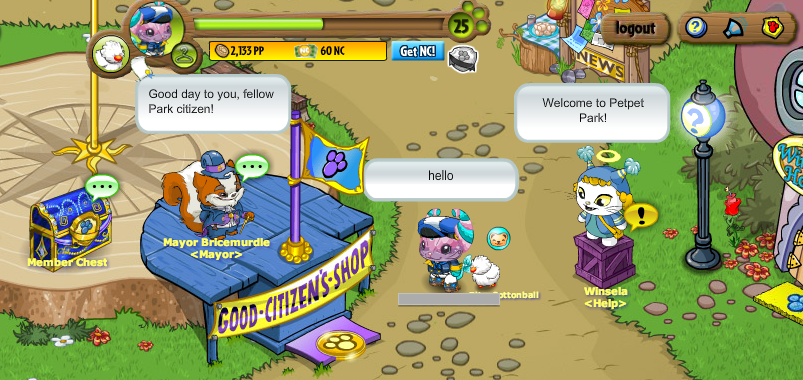Note: As promised, I’m revisiting this post (roughly 6 months later) to review my thoughts and predictions. Reflections are highlighted like this note.
Those of you who know me, know that I am obsessed with Pokémon (it was even the theme of my Intro to CS class last semester). I’ve blogged about Pokémon before (1 & 2), but now that everybody has bought into my insanity, I feel the need to do it again. Of course, I’m talking about the mobile augmented reality game Pokémon GO!, which has taken the U.S. by storm over the last two weeks.
The general Internet rhetoric regarding the game is a bit extreme (of course): it will kill your children (maybe in the process of arresting them), after robbing them, and stealing all of their data! Or, it will turn your children into monsters who mock the Holocaust or stare at their phones instead of the real world! Also, it may get YOU sued (as a property owner), even if you don’t play it. On the other hand, it could improve people’s health, get them to go outside, make friends, and help them discover and fall in love with their own cities!
I want to share my experience. I’ve been conducting “participatory observation” since the day Pokémon GO! came out: I’ve been playing myself and I’ve been stopping people on the street who are playing and asking them questions. I’ve done this in two cities (4 days in Minneapolis, 4 days in Chicago). Based on this, there are a three points I want to add to the above narrative:
- It is probably not doing anything to your children. There may be children playing this game, but I haven’t met any (only anecdotally: one man I met said he DID see one child playing it). All the players I’ve met have been roughly in the 19-35 range. I’m currently doing fieldwork at a middle school and NONE of the children I work with play. My main two main hypotheses for this: the game was aimed at the nostalgia of the older audience (e.g., it only has 1st generation Pokémon), and American children are not allowed to be as independent as Japanese children in exploring outside. Revisiting: Actually, this totally became more popular with the kids later — but it did take a solid 3 weeks post-release. Fail.
- It’s more about spatial computing, than the AR or stepcounts. The augmented reality (AR) is exciting at first and can always be turned on to catch a good photo op, but most experienced players turn it off to make catching Pokémon easier. The step count intervention is actually only a small part of the game and nothing new for Pokémon. What IS new and integral to the game is that everything happens in physical space, on a real map that you must move through to have meaningful encounters. This is positive because it creates opportunities for encounters with strangers, gets you moving, and (most importantly for me) leads to a playful exploration known as a dérive. It is negative when it leads to car accident, arrests, injuries, trespasses, disrespectful behavior, and all the other problems mentioned at the beginning of this post. Do the potential benefits exceed the costs? Each player must decide for themselves. Revisiting: I think this one was on the money — people play this as a spatial game not an AR game. Success.
- It is undeniably urban. My drive from Minneapolis to Chicago was a Pokémon desert, with very few spots along the way (though definitely enough quirky points of interest that could have qualified). This is because Pokémon GO! relies on user-generated geographic interest points (borrowed from the game Ingress). One big issue with that (pointed out by my colleagues in a recent publication) is that peer generated geographic data is significantly biased towards urban environments. So, while the download numbers may make it seem like the whole country is playing, it’s really just us city-dwellers. Revisiting: Others have picked up on this too, so I think I was right. Success.
And now, for a few predictions… (1) Most people will stop playing soon — it’s too repetitive and battery-draining and nostalgia can only get you so far (Revisiting: Yep, many sources confirm this. Success.); (2) if you buy a few of these devices when they become available, you will be able to turn a profit reselling them (Revisiting: Yep, it you bought it for $35 when it first came out, you can now resell it for over $50 since Amazon and Gamestop are both sold out. Success.); and (3) Pokémon Sun and Moon will be the best selling Pokémon generation ever. (Revisiting: Yep, Sun/Moon was the best selling not just Pokemon but Nintendo game ever. Success.) I’ll check in a few months to see how many of these came true! Revisiting: I’d say that went pretty well! Out of my 6 points/predictions, 5 were successes!
Have you been playing Pokémon GO!? What is your experience with it? Any stories that run counter to the points I’ve made above?
P.S. Team Mystic is the best team.





 (1) We started out with the free version of the
(1) We started out with the free version of the